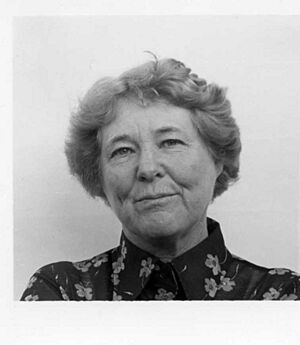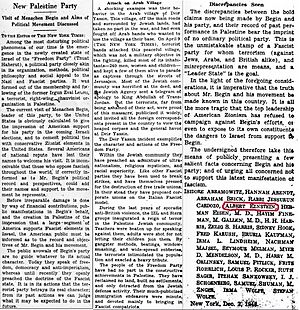Bruria Kaufman facts for kids
Bruria Kaufman (born August 21, 1918 – died January 7, 2010) was an American scientist who studied physics. She made important discoveries in several areas of physics.
Bruria Kaufman worked on Albert Einstein's general theory of relativity. This theory explains how gravity works. She also contributed to statistical physics, which uses math to understand how many small particles behave. She used a special type of math called spinor analysis to help explain the Ising model, which is about how magnets work. She also studied the Mössbauer effect with other famous scientists like John von Neumann and Harry Lipkin.
Her Life Story
Bruria Kaufman was born in New York City. Her family was Jewish and came from Ukraine. In 1926, when she was eight years old, her family moved to the land known as the British Mandate for Palestine. They lived first in Tel Aviv and then in Jerusalem. When she was young, Bruria loved music and mathematics.
She went to university to study mathematics. She earned her first degree from the Hebrew University of Jerusalem in 1938. Later, she received her PhD from Columbia University in 1948. In 1941, she married a linguist named Zellig S. Harris. A linguist is someone who studies languages.
In 1960, Bruria Kaufman moved to a Kibbutz called Mishmar Ha'emek. A kibbutz is a special type of community in Israel. While living there, she adopted a daughter named Tami.
Bruria Kaufman returned to the United States in 1982. She lived in Pennsylvania, where her husband taught. Her husband passed away in 1992. Bruria then moved to Arizona. She died in January 2010 at a hospital in Haifa, Israel. She had been living in a nursing home nearby. As she wished, her body was cremated.
Her Work in Science
From 1948 to 1955, Bruria Kaufman was a researcher at the Institute for Advanced Study in Princeton. This is a very famous place where scientists do important research. There, she worked with John von Neumann in 1947 and 1948. She also worked closely with Albert Einstein from 1950 to 1955.
After that, she spent some years at the University of Pennsylvania. She worked on a project about mathematical linguistics. This field combines math with the study of language.
In 1960, Bruria Kaufman moved back to Israel with her husband. She became a professor at the Weizmann Institute of Science in Rehovot. She taught there from 1960 to 1971. Later, she became a professor at the University of Haifa, where she taught from 1972 to 1988.
See also
 In Spanish: Bruria Kaufman para niños
In Spanish: Bruria Kaufman para niños



